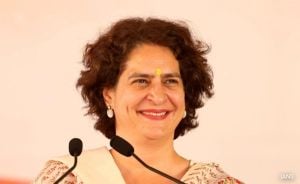With warmer weather dawning and longer days approaching, Australians are getting ready for the annual clock change as daylight saving time (DST) kicks off. Each year, the first Sunday of October brings the clock forward by one hour, marking the return of longer evenings filled with sunlight. This year, October 6 is the day when locals will spring forward, adjusting their clocks at 2 am to 3 am.
DST is observed by several states and territories across Australia, namely New South Wales, Victoria, the Australian Capital Territory, Tasmania, and South Australia. Notably, this means for six months, Australia will find itself operating across five different time zones instead of the usual three, leading to some unique challenges and discussions, especially for those living near state borders.
It's interesting to note the origin of daylight saving. The concept originated with George Hudson, a New Zealand entomologist, who suggested shifting the clocks to have more daylight time for his insect collection activities. This idea gained traction, leading to the implementation of DST for the first time during World War I, as governments sought to conserve energy.
While some people rattle off the benefits of daylight saving—like more evening daylight for activities and potential energy savings—it remains contentious among many, particularly rural dwellers and certain groups of Queenslanders. Queensland has not engaged with daylight saving since it was put to referendum back in 1992, where 54.5% voted against it. Oddly enough, the debate continues today, often creating divisions between the south-eastern regions of Queensland and the rest of the state.
Meanwhile, Western Australia and the Northern Territory similarly refrain from using DST, turning their clocks back and forth with the seasons. Their consistent opposition to time changes has sparked intrigues and heated debates.
Although many people enjoy the extra sunlight, not everyone is on board. Farmers, for example, argue about the practicality of waking up and tending to livestock during the darker hours of the morning caused by the clock change. North Queensland MP Robbie Katter voiced concerns, emphasizing how daylight saving complicates life for people living and working under soaring temperatures, particularly when they begin their day before dawn.
Aside from the local politics surrounding DST, there are significant discussions about its effects on health and well-being. Science has shown there might be serious ramifications to daylight saving. Professor Sean Cain, president of the Australasian Chronobiology Society, warns of the negative impacts of switching time zones, emphasizing how abrupt changes can drive disruptions to our body's circadian rhythms—a factor linked to everything from sleep quality to mental health.
These drastic shifts can mimic symptoms of jet lag, as our bodies struggle to adjust quickly. Academia suggests people living without DST report fewer instances of stress-related health problems and, interestingly, researchers claim they tend to live longer and experience less chronic illness. This aspect highlights why so many are advocating for the removal of daylight saving time entirely; they argue the health benefits far outweigh the fleeting advantages of extended daylight.
Opponents of DST raise reminders about its potential impact on accidents and emergency room visits tied to disrupted sleep patterns when clocks spring forward. According to studies, there’s often noticeable spikes seen around the time of transition, adding urgency to the safety discourse surrounding the time shift.
On the other hand, proponents of DST argue it plays serves social benefits as well, offering families added daylight after work to spend more time outdoors together. Many Australians are torn between the draw of enjoying more evenings under the sun and the concerns for their health and daily routines.
Interestingly, studies suggest animals, like pets, adjust more gracefully to the time changes than humans. According to veterinarian Dr. Joanne Sillince, pets rely less on rigid schedules dictated by time pieces. Instead, their daily activities are often more closely aligned with the natural rhythms of light and dark, meaning they thrive as long as their needs (like food and water) are met. Dr. Sillince says pets tend to adapt to daylight saving quite wonderfully compared to their human companions, who often let the clock dictate their lives.
At its core, daylight saving remains a storytelling of opinions and experiences as varied as the Australian landscapes it touches. Whether it’s the early risers clinging to the promise of more daylight for evening activities or the passionate advocates for rural life pushing back against standardized time, the rhythm of seasonal time changes offers far more than just the adjustment of clock hands.
With the countdown to the first Sunday of October set, Australians are faced with their yearly ritual of redistributing sunlight and adjusting their routines. This shift, under the watchful eye of science and public debate, remains deeply entrenched and multifaceted.



